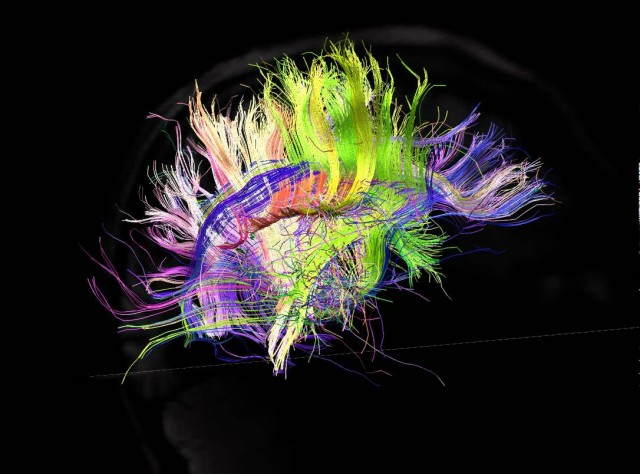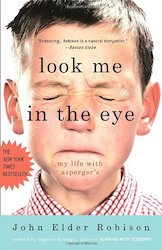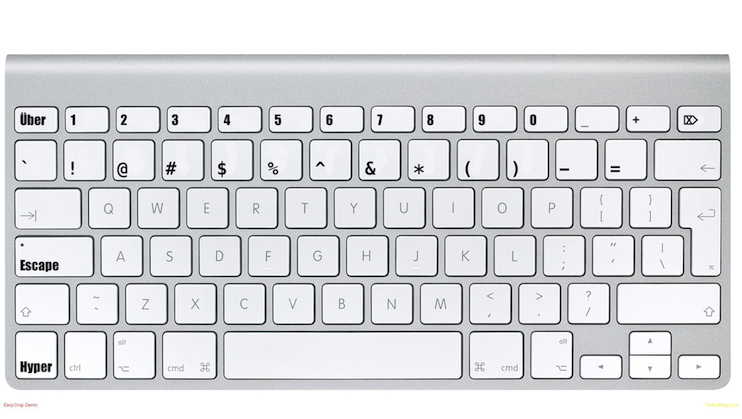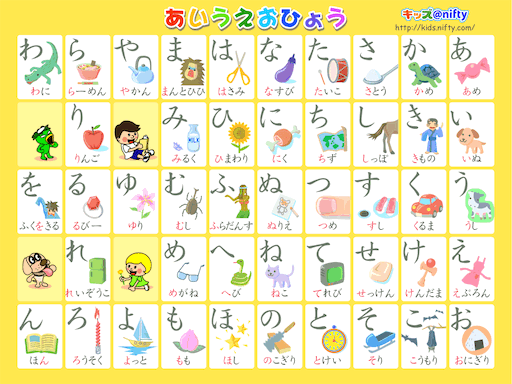Hacking Neuroplasticity – Why The $#@! Not?
There are many disorders caused by a disruption of networks in the brain. In some cases, I believe learning to speak and communication with new languages can help “renormalize” these networks, taking advantage of neuroplasticity to circumvent these disruptions. In Autism Spectrum Disorder(ASD), these networks of neurons develop differently during early childhood, resulting in a myriad of effects on behavior, perception and communication. In Traumatic Brain Injury(TBI), an injury either prevents the components of these networks from functioning properly or stifles communication between these networked components. Unfortunately, while this idea for treatment may be effective for some, it will not be possible in some cases.
Please note that I’m writing this article without formal training in psychology or medicene. Therefore, the information isn’t complete and should be regarded as a general hypothesis only. One of the problems of lacking formal education is familiarity of concepts without knowledge of the common language used. Therefore, I may make some mistakes such as using the term disorder in the wrong context.

I really, really like Coursera!
I’ve spent a lot of time researching how the brain works. I’ve taken Henry Lester’s Drugs in the Brain, offered by CalTech on Coursera. It was an amazing course on neuropharmacology and neurology. The class introduced me to a wide variety of topics. I’ve also taken Andrew Ng’s Machine Learning course on Coursera, an amazing introduction to the topic. In the past few years, I’ve spent a lot of time amalgamating ideas from machine learning, neurology and psychology. Recently, I took the Neuromarketing class offered by the Copenhagen Business School on Coursra.
I recently read this great ArsTechnica article on ASD, which postulates that some neurological disorders are caused by changes in how neurons and their networks are connected in our brain. Some regions have higher interconnectivity than “normal.” Some areas which are normally strongly connected are instead more disparate. In autism, this can have significant impact on how people think, perceive social interactions and communicate.
“There is even data suggesting that some neurological disorders are in fact ‘connectopathies,’ characterized by either aberrant connections or an unusual extent of connections among neurons.” - ArsTechnica
John Elder Robinson, author of Look Me in the Eye, calls the normal people neurotypicals or “nypicals” for short. There can be significant disadvantage to some of the symptoms and patterns in autism, but there are also great strengths to seeing the world in a different way. Because of this, I’m hesitant to embrace treatments that seek to artificially “normalize” the autistic brain, especially via medication. I’m not a doctor and while medication may be helpful in some areas, it doesn’t do anything to address the underlying causes of autism.

Another treatment I’ve read about is Transcranial Magnetic Stimulation, which may be promising. It’s a treatment that may affect the altered neural connections in the brain, but it’s really hard to say how it’s doing that. Everything that heals may also harm. Can we really control the level and focus of stimulation to produce the desired results? Do we even understand how the TMS mechanism would produce those effects? Can me measure the physical and behavioral effects? And if, after enough research, we can answer yes to those three questions, are we also losing the gifts that an autistic brain can offer?
IMO, Cognitive Behavioral Therapy is far more effective than either of these. This “Language Therapy” I’m proposing is really a CBT technique. It’s a skill that people can develop that may help “normalize” the networks in the autistic brain. It may also work in some cases of TBI and while I believe there is less likelihood of effective treatment in TBI, a case of effective treatment may have more beneficial effect than in ASD.
There’s been a ton of study into how learning languages effects the brain, so this Language Therapy probably isn’t a new idea. But, if it works, it would be a more natural treatment. Language therapy works by forcing the brain to make stronger connections between ideas and concepts. Language involves nearly all parts of the brain. These disparate modules in the brain are more engaged when people are having natural, spoken conversations. If the language is not spoken or the context is not a natural conversation, it may still be helpful, but it cannot holistically engage the brain.
Sidenote: all the people complaining about an America where you have to learn two languages are ignorant. Learning multiple languages will make us far smarter, understanding and compassionate. We should embrace the opportunity to do this. The earlier, the better.
Unlearning is Hard
I’ve noticed that when learning to do something in a new way, I sometimes need to prevent myself from doing it in the old way in order to make the leap. This is particularly true when the “old way” is a deeply engrained habit and is very similar to the “new way” I am trying things. If I don’t disable the old method completely, I never make the jump because my mind subconsciously reaches for the tools and connections that it has already strengthened. Many people have noticed this phenomenon and teachers are encouraged to avoid teaching you something incorrect so that you do not have to unlearn.
When I was experimenting with learning new keyboard layouts, I had the idea to turn my media keys (play, pause, etc) into the symbols !, @, #, etc. However, I could still press shift-1 to type ! and this meant that I didn’t really utilize the new keyboard layout. So, to break the habit, I instead wired the media keys to digits 1, 2, 3, etc. and the old digit keys to the symbols !, @, #, etc. Immediately, I started using the new technique.
You can read more about how to configure this keyboard layout on OSX/Linux in this article here. The files required to configure this are in my keyboard dotfiles. It meshes nicely with Qwerty, Dvorak, and Colemak!

Forcing New Connections in the Brain
My point is that, in cases where networks in the brain are disrupted, you may need to seek alternative behaviors that help force new connections to form. And learning a new language is a great way to do that! In cases of TBI, there may be networks of neurons that are still functioning, they just aren’t connected the the networks of neurons upstream. However, because you are learning something completely new, then you will be forming new connections, which will hopefully circumvent dissociated circuits. Also, because certain areas of the brain may be disconnected, your brain may respond by linking networks which are not normally connected.
As your brain continues to strengthen these alternate pathways, because language involves so many neural modules, your brain should also begin to connect these modules in new ways. This is why language perfect for circumventing disconnections in the brain – it involves all parts of the brain. And it has to make these connections, somehow – that is, if you are able to learn a new language at this point. It may be very difficult at first, but your brain should start to normalize, though it’s impossible to say how much progress someone will make.
Sign Language and Neuroplasticity
This doesn’t just apply to spoken language. Particularly, if learning a new spoken language fails, sign language should be attempted. Sign language may be particularly useful in cases where aphasia and other similar neurological patterns are present. In fact, sign language in itself forges new connections between the areas of the brain that perform motor coordination and symbolically interpret gestures. Therefore, it may be more useful than learning a new language for utilizing neuroplasticity.
Mental Functionality is Modular and Everything is Connected
In the brain, everything is connected and functionality is modular. These modules can form new connections. This can supplant or augment existing neural pathways. For example, practicing martial arts blindfolded forces you to strengthen the connections between senses not normally used. You have to focus more on what you hear and rely on the memory of your opponents position, stance and behavior. Therefore, when you remove the blindfold after significant training, these pathways have been strengthened and your mind is now more capable of utilizing all the information available.

The blind monk from the non-historical Netflix Original Marco Polo
Therefore, people who force themselves to learn more methods of doing things have more tightly integrated the modules in their brain. Language is particularly useful in this context, as it involves nearly all of the brain. You have to interpret sounds/gestures, perceive facial expressions, attune yourself to others’ emotions and experiences, and quickly assemble responses to their input.
When learning a new language, there are new idioms to learn, new grammar and new forms of written expression that are completely different. For example, English and Romance languages are Subject-Verb-Object(SVO), whereas Japanese is Subject-Object-Verb(SOV). This significantly affects both the planning process for speech and interpretation. Japanese and Chinese share the Kanji writing system, though it has somewhat diverged. Learning to recognize thousands of symbols is very difficult, but also enables you to visualize symbols more effectively.
In the languages in our world, each of these differences is a chance for your brain to make more connections that didn’t exist before. No matter their age, assuming it is possible for someone to learn a new language, making these new connections can totally rewire the brain. This is like hacking neuroplasticity!
Recommended Languages
I personally recommend Japanese, Spanish, Sign Langauge and Hindi.
Japanese
Japanese is great because there’s tons of free anime and media online to learn from. However, there isn’t a huge community of speakers in the US, so it can be hard to connect with others for IRL conversations. But there are Facebook and Google groups online where you can find people to Skype with. If there’s a will, there’s a way.
Additionally, while the writing system is difficult to learn, this is precisely why it’s a great language to learn if you want to force new connections in the brain. *Learning Chinese and Japanese will literally *MAKE YOU MORE INTELLIGENT!! ** Upgradez Yo Hardware!

The basic phonetic Hiragana and Katakana writing systems aren’t too bad and have ~100 symbols combined. But, if you can’t read Kanji, then you’re basically illiterate to Japanese media. There are lots of tools to facilitate learning Kanji, but most people would just give up. The best way to do it is to find a realllly good book, then copy and translate one symbol at a time until most of the symbols you reach are duplicates. You will be surprised at how quickly you begin to see duplicates, but this is still incredibly difficult and time consuming.
Spanish
Spanish is great because there’s a huge community of speakers in the US. That means you’re more likely to connect with other people and have real conversations that you couldn’t before. Spanish is a Romance language. Thus, is very similar to English, in its grammatical structure, its vocabulary and the relationships between concepts covered by its vocabulary. All Romance languages share these similarities with English, though some have diverged significantly.
American Sign Language
Sign language is great because, while it’s a language, learning it affects your mind differently, neurologically. This is because sign language involves vision and gestures instead of speech and hearing. And thus, if learning it to help normalize the brain, ASL may offer additional possibilities. Sign language is great to learn anyways because it offers new ways to listen to people and to express yourself.
Startup Concept: 3D Gesture Based Search for Sign Language!
Who thinks of this stuff? Me!! I’m fucking creative as shit and seriously underestimated and underappreciated. No, seriously …
It doesn’t exist and would be incredibly useful!! I don’t have the time or the technical chops to do it, so you can thank me later. The idea may not be 100% original, but I did independently think of it. So, I just need to find capable hands and plant the idea. Now, go forth and start up!
Hindi
Hindi is also great because there’s a separate writing system and it’s less complicated than Kanji. The Hindi language and writing system are also phonetically unique and captures many more sounds than the Roman alphabet. In fact, the Sanskrit alphabet employed by Hindi is something of a metalanguage, due to it’s ability to encapsulate virtually every human phoneme. And thus, it has unique applications in computer science :) ;)

Update: this is actually Tibetan, not Sanskrit. Woops.
I’m not really sure why I didn’t catch this. While not very familiar with either language, I do at least recognize the lexigraphic differences. However, when I posted this, it seems that the Tibetan for “Om Mani Padme Aum” was familiar enough in my mind to prevent me from intellectually discerning that I was wrong. That’s wierd. Either that, or it’s lexigraphically similar enough to sanskrit. Sidenote: each letter in “Om Mani Padme Aum” has a symbolic significance as part of a mantra.

Getting Started
If you’re planning on using this technique as a treatment, I would consult your doctor or therapist first, as they will have many suggestions.
If you have an autistic child, it may be difficult to get them to want to learn a new language. You’ll want to approach the situation tactfully and you may not want to let them know exactly why you’d like them to learn. Additionally, you’ll need to learn the language yourself. After all, it’s no fun if you’re the only one that knows Japanese. You may try getting their friends or siblings to learn as well.
If you or someone you know has suffered from a traumatic brain injury, it might be depressing if they can’t learn it. It’s important to approach the situation carefully, but I really think it could produce dramatic results in some cases. It may be extremely difficult at first, but seeing any benefits at first should mean that more benefits are in the works.
If you don’t learn it young, there’s no point?!
Seriously? GTFO! LOL … Someone casually mentioned this to a friend behind me at the coffee shop once, while I was practicing Kanji. So I could overhear .. I guess?
Self-improvement is always beneficial and philosophically, this attitude goes nowhere fast.
DuoLingo - FREE
The best language app I know of. Rosetta Stone may be a bit better, but it’s much more expensive. Besides, Asthon Kutcher is a DuoLingo investor! Didn’t you watch That 70’s Show?